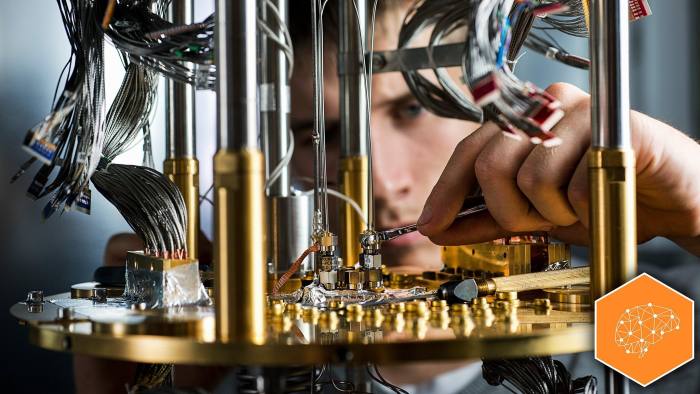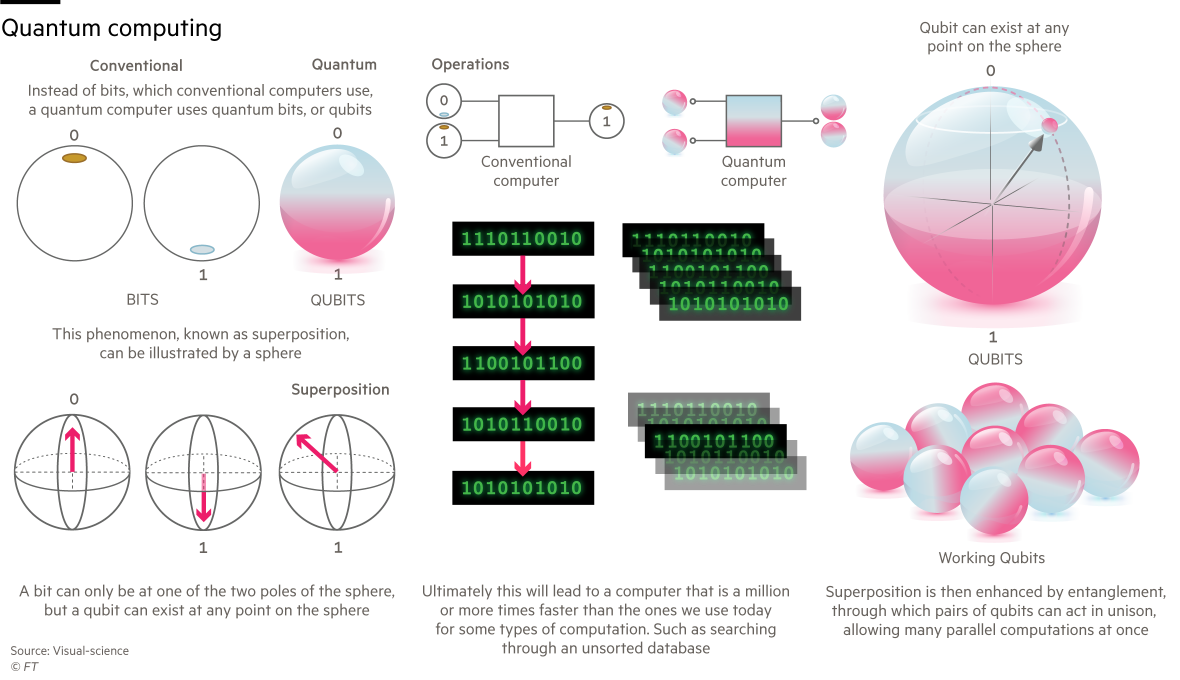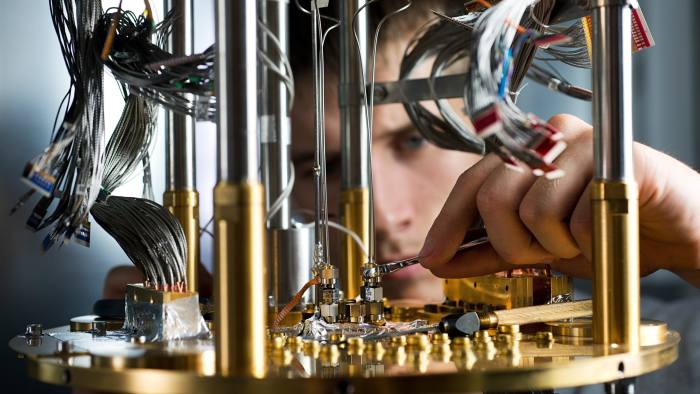Early quantum computing investors see benefits
Source: Richard Waters

Please use the sharing tools found via the email icon at the top of articles. Copying articles to share with others is a breach of FT.com T&Cs and Copyright Policy. Email licensing@ft.com to buy additional rights. Subscribers may share up to 10 or 20 articles per month using the gift article service. More information can be found at https://www.ft.com/tour.
https://www.ft.com/content/b2f1c0ea-e4ff-11e7-a685-5634466a6915
Quantum computing will potentially mark one of the tech world’s biggest revolutions, harnessing the quirks of quantum mechanics to speed up machine computation exponentially. Researchers hope eventually to use it to crack online encryption or to model entirely new molecules.
Full-scale, general-purpose quantum computers are still years away, but the first rudimentary systems stringing together tens of quantum bits (or qubits) have been made available for researchers and developers to use online. Along with quantum simulations running on “classical” computers, this has given software developers their first chance to work on the technology.
Microsoft and Google are also preparing to announce breakthroughs in the development of quantum machines. Although the technology is expected to take decades to mature fully, the first benefits of quantum computing are starting to trickle through.
John Sarrao, associate director for theory, simulation, and computation at the Los Alamos National Laboratory, is among the scientists looking at how to invest in the technology. The organisation, best known for its work on nuclear weapons, is taking a long-term view of quantum computing from a national security point of view. However, according to Mr Sarrao, there are also benefits to be gained in the shorter term.
Los Alamos has been one of the earliest customers for the first commercial quantum machine, made by DWave Systems. The Canadian company’s computers use a technique known as quantum annealing — an approach best suited to handling complex optimisation problems.
Mr Sarrao says that this quantum machine has been applied to real-world problems, like analysing the electronic structure of materials. A supercomputer can already perform such tasks but the expectation is that one day, when the industry achieves so-called “quantum superiority”, quantum machines will be able to do the work faster.
“We’re basically making a workforce investment,” he says of the DWave purchase. Los Alamos has opened the system up to any of its developers who want to try out the technology.

Please use the sharing tools found via the email icon at the top of articles. Copying articles to share with others is a breach of FT.com T&Cs and Copyright Policy. Email licensing@ft.com to buy additional rights. Subscribers may share up to 10 or 20 articles per month using the gift article service. More information can be found at https://www.ft.com/tour.
https://www.ft.com/content/b2f1c0ea-e4ff-11e7-a685-5634466a6915
Setting developers free to learn new programming techniques has had benefits. “Our best DWave users are also people who are deeply involved in large-scale classical simulations,” says Mr Sarrao. They are “definitely excited” about the new techniques of quantum programming, and have been using in their regular jobs ideas gained during this experimental work, he says.
Improving classical computing
This is one of the most immediate benefits of investing in quantum computing: it helps shape developers’ ideas, improving the way that classical computers are programmed and laying the ground for the eventual move to full quantum machines.
Krysta Svore, head of Microsoft’s quantum programming, calls these “quantum-inspired” algorithms. “We learn all of these new techniques that we can bring to bear on classical computing,” she says. “These solutions can speed up your problem right now.” One example was a contribution to Microsoft’s development of an algorithm to train deep neural networks.
By applying techniques more suited to quantum machines — such as the massive parallelism inherent in systems that can be in many different states at once — Ms Svore and her colleagues reduced the time it took to train a neural network, as well as improving the quality of its performance.
Hybrid algorithms
Another near-term gain lies in hybrid algorithms that use both quantum and classical computing resources. Algorithms like these will make full use of classical computers to handle much of their work, handing off parts of the computation to quantum hardware where necessary.
Rigetti Computing, a US quantum computing start-up, late last year published what it said were results of the most complex hybrid quantum algorithm yet devised. The software was used for unsupervised learning, a type of machine learning that involves identifying patterns in data without the training usually associated with machine-learning.
Madhav Thattai, chief operating officer of Rigetti, says: “This hybrid approach will lead to the first examples of quantum advantage” — the moment when quantum machines deliver real commercial benefits that cannot be achieved with classical computers.
Ideas like these may help to bring forward some of the benefits of the quantum age. Ultimately, however, companies are investing in the technology now to secure a head start when full-scale quantum computers finally arrive.
When that will happen, says Mr Sarrao at Los Alamos, depends on two things: hardware advances that lead to better-quality qubits, and better software that requires fewer qubits to solve complex problems.
Today’s quantum bits, or qubits, are able to maintain a quantum state for only a matter of milliseconds, before outside interference causes them to “decohere” and the information they were processing is lost. Without more robust qubits, simply correcting for errors in quantum systems is expected to consume most of the systems’ resources.
“We’re seeing the convergence of better algorithmic efficiency on the one hand, and better qubits on the other,” says Mr Sarrao — before adding that is still impossible to predict how fast that convergence will take place.

A quantum dream approaches reality
DWave engineered the first commercial quantum computer earlier this decade, but its efficacy is range-bound
1982
Physicist Richard Feynman proposes the idea of quantum computing
1994
Mathematician Peter Shor shows how a quantum computer could be used to crack encryption
2011
Canadian company DWave launches the first commercial quantum computer, though the problems it can tackle are limited and the extent of its quantum effects are questioned
May 2016
IBM lets users experiment with its first quantum computer, a 5-qubit system
Apr 2017
Google reveals plan to reach ‘quantum supremacy’, overtaking classical computers, by the end of the year
Nov 2017
IBM claims to be the first company to have built a 50-qubit processor
| }
|